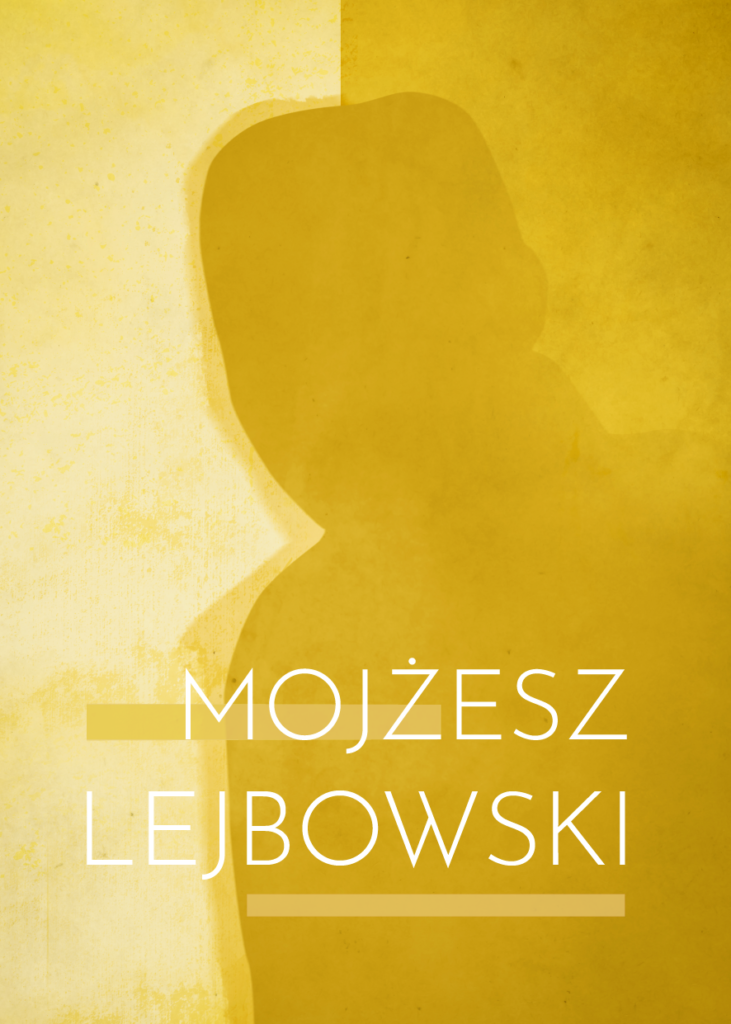17 March 1876, Navahrudak (Belarus)
– 1942 or 1943, the Vilnius ghetto
Biografi
Mojżesz Lejbowski was a painter and well-known portraitist whose works were exhibited in Vilnius, Białystok, Minsk and Grodno. Aside from portraits, he also created paintings of city views, as well as depictions of alleys and courtyards inhabited by poor city dwellers.
He was born on 17 March 1876 in Navahrudak (Novogrudok), Belarus. He studied painting in Vilnius where he was taught by Ivan Trutnev, a Russian painter and the founder of the Vilnius School of Drawing. He went on to study painting in Paris where he lived in 1899-1900 and later in 1904. In the interwar period, he lived in Vilnius, working as a drawing teacher. After the establishment of the Vilnius Jewish Society of Fine Artists in 1925, he became the society’s chairman. In this role, he was responsible for e.g. organisation of material aid for artists.
He was a famous portraitist, using not only oil paints, but also pastels, in his works. When he was not busy creating portraits of people, he focused on depicting picturesque city views and scenes from the lives of urban residents. The Jewish poor were one of the most important themes of his art. He was a teacher of Rafael Chwoles, a Jewish painter and graphic artist who was a member of the Vilnius literary and artistic group “Jung Wilne”. Lejbowski’s works were exhibited in such cities as Vilnius, Białystok, Minsk, and Grodno.
In 1940, he lived in Grodno, but in 1941, he was forced to move to the ghetto in Vilnius. Unfortunately, the cause and exact date of his death remain unknown. He is believed to have died in the Vilnius ghetto in 1942 or 1943. No photographs of Lejbowski have survived. The only known portrait of the artist is a caricature made by the painter Leonard Torwirt.
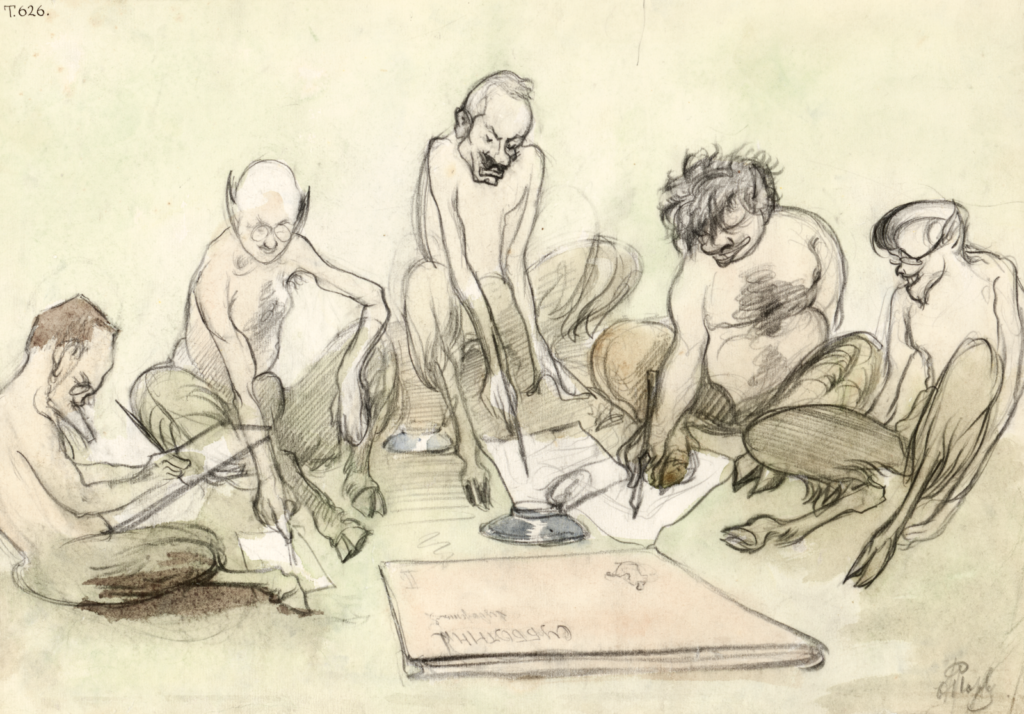 Hermanas Torvirtas, „Subotnik chudožnikov” editorial committee: M. Leibovskis, B. Zalkindas, Ferencas-Sokolovskis, H. Torvirtas and I. Rybakovas, 1913 (No T-627). The artwork is stored in the Lithuanian National Museum of Art
Hermanas Torvirtas, „Subotnik chudožnikov” editorial committee: M. Leibovskis, B. Zalkindas, Ferencas-Sokolovskis, H. Torvirtas and I. Rybakovas, 1913 (No T-627). The artwork is stored in the Lithuanian National Museum of Art
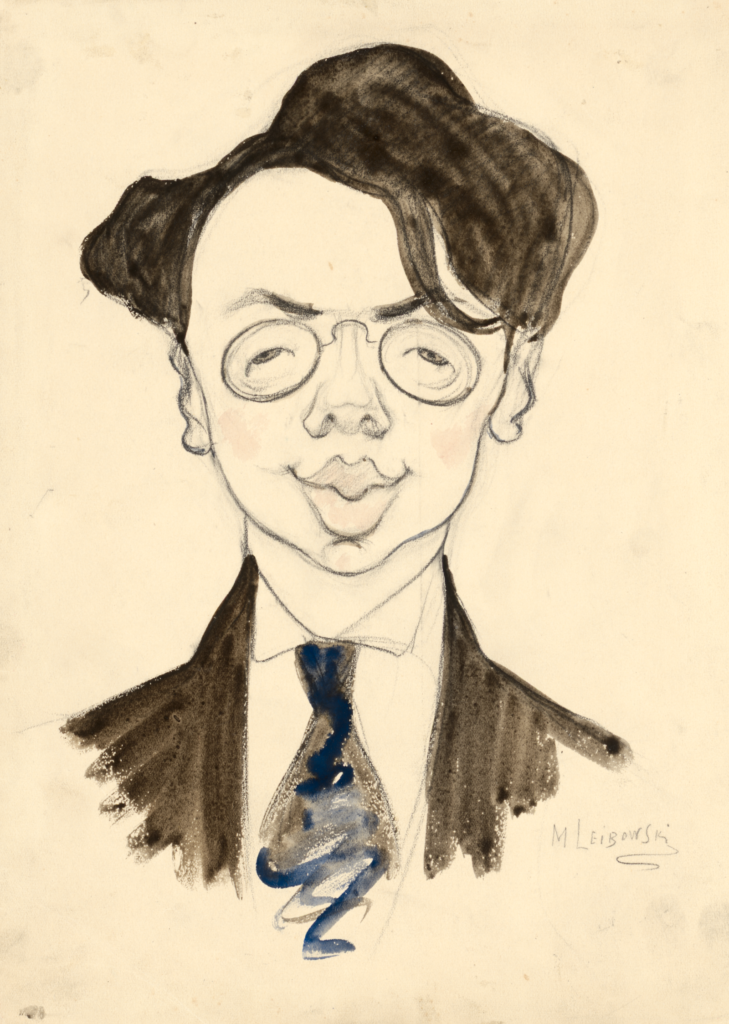
Mojżesz Lejbowski, Grafman’s caricature, 1913 (No T-627).
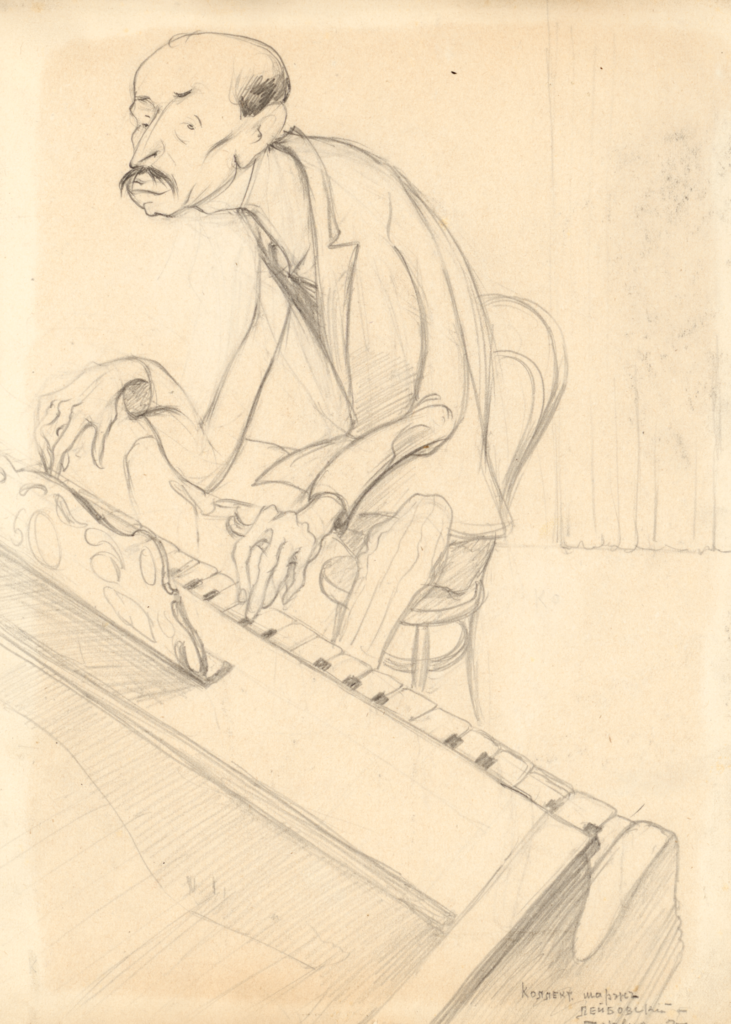
Mojżesz Lejbowski, Caricature of a pianist, 1913 (No T-628).
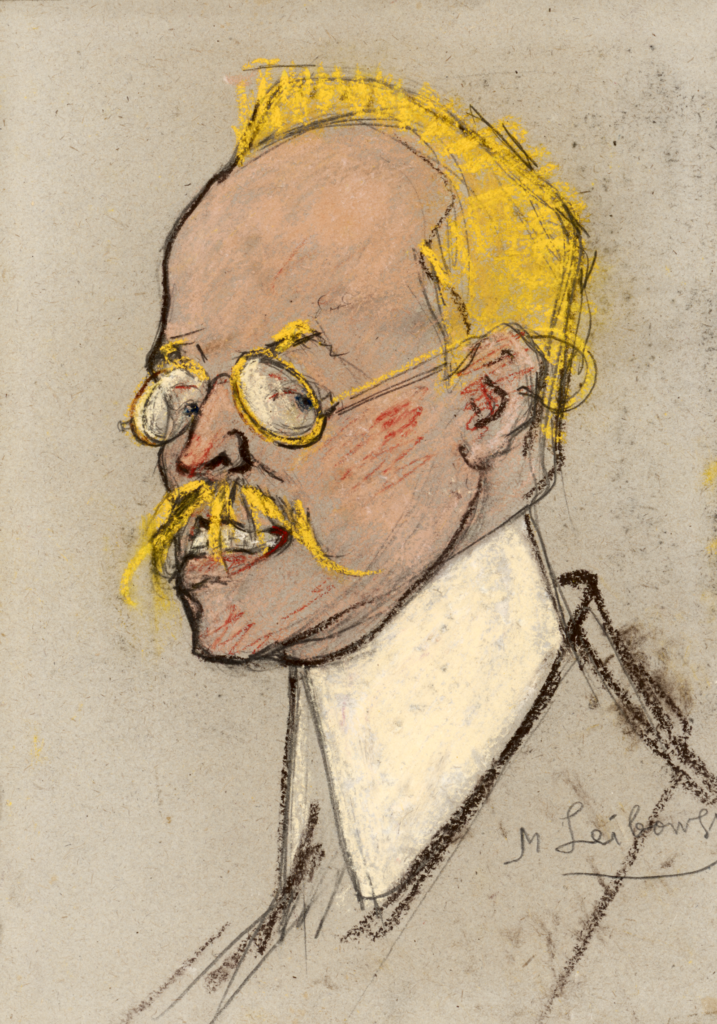
Mojżesz Lejbowski, Ratasep’ caricature, 1913 (No T-630).
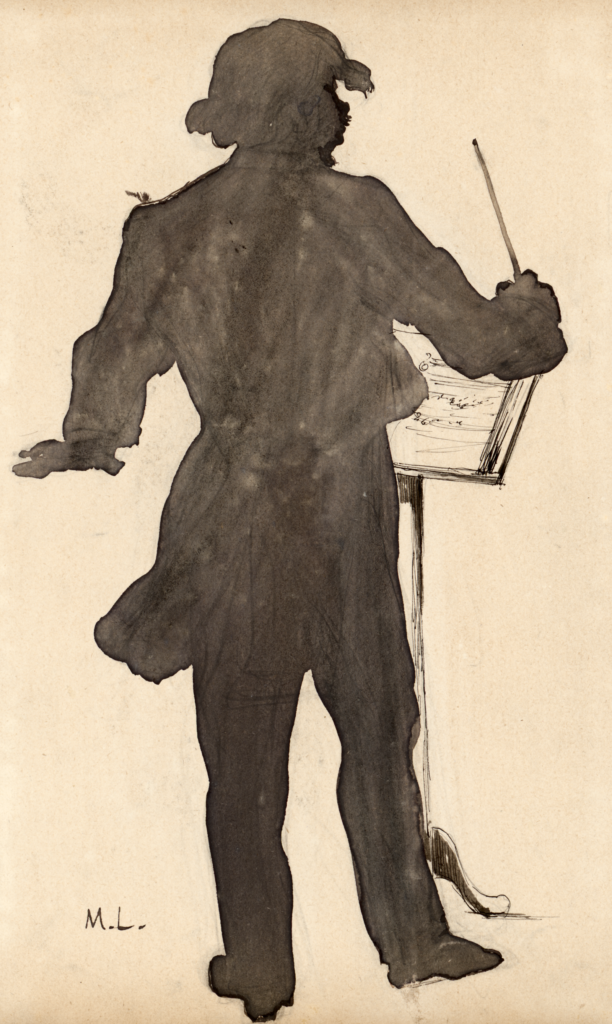
Mojżesz Lejbowski, Caricature of conductor Bonto, 1913 (No T-634).
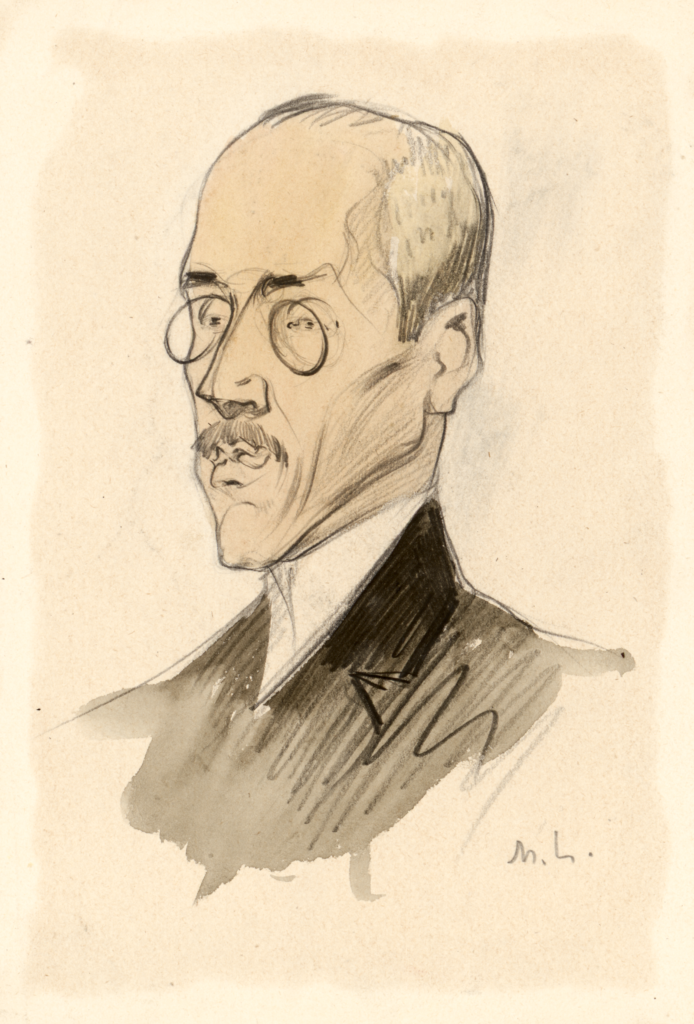
Mojżesz Lejbowski, Nezabitauskas caricature, 1913 (No T-636).
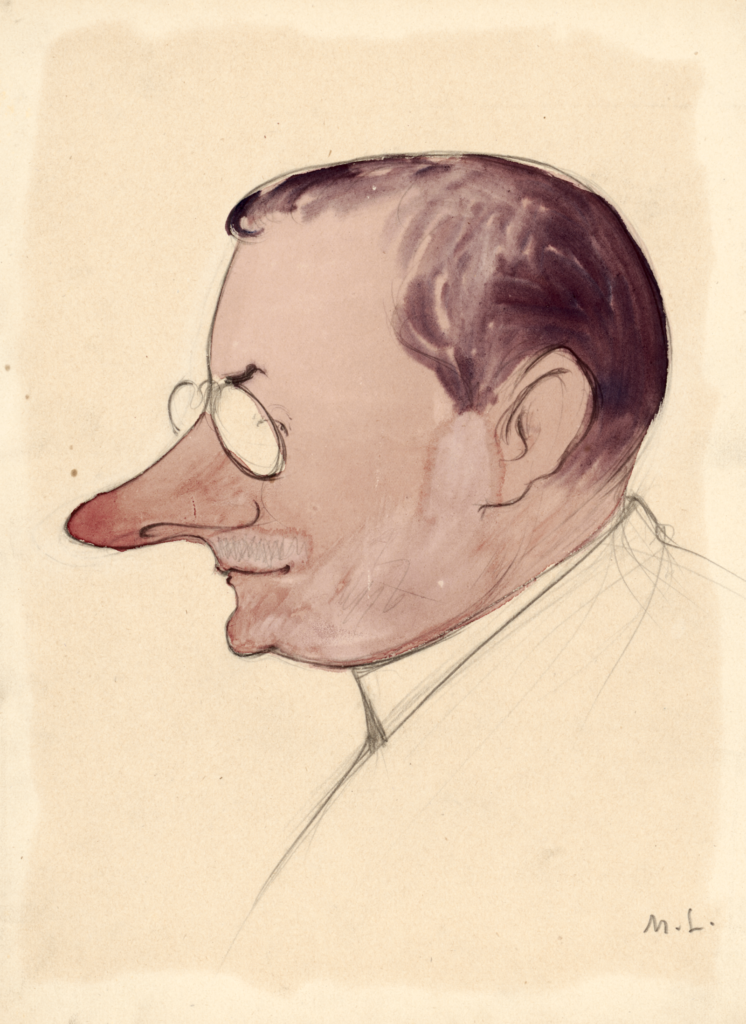
Mojżesz Lejbowski, Lenkševičius caricature, 1913 (No T-637).
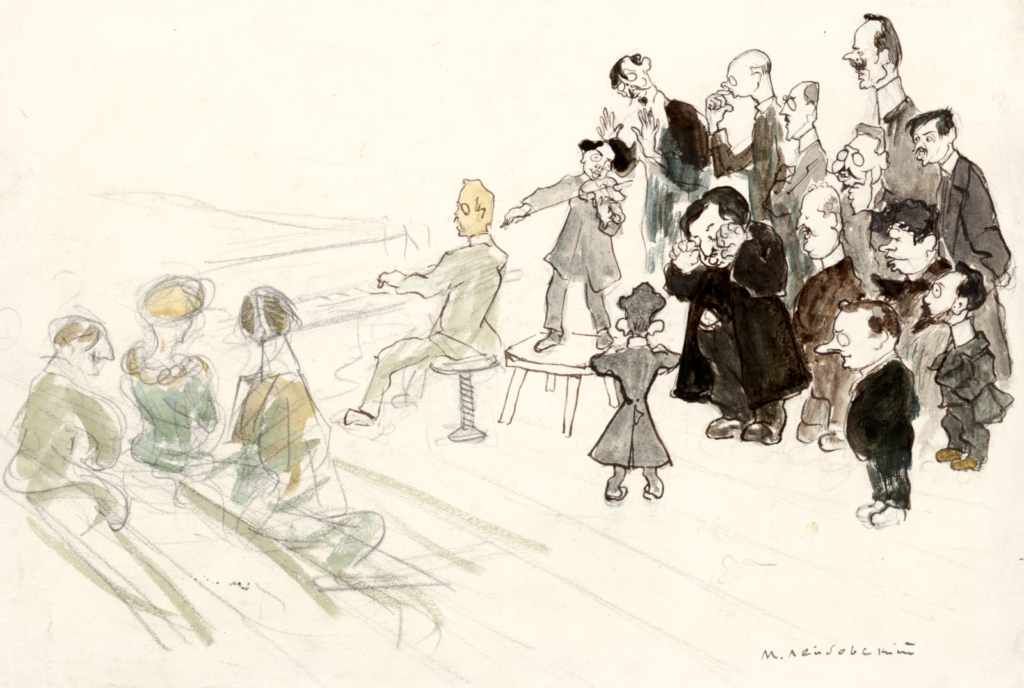 Mojżesz Lejbowski, Saturday’s concert at the artists, 1913 (No T-643).
Mojżesz Lejbowski, Saturday’s concert at the artists, 1913 (No T-643).
The artworks are stored in the Lithuanian National Museum of Art
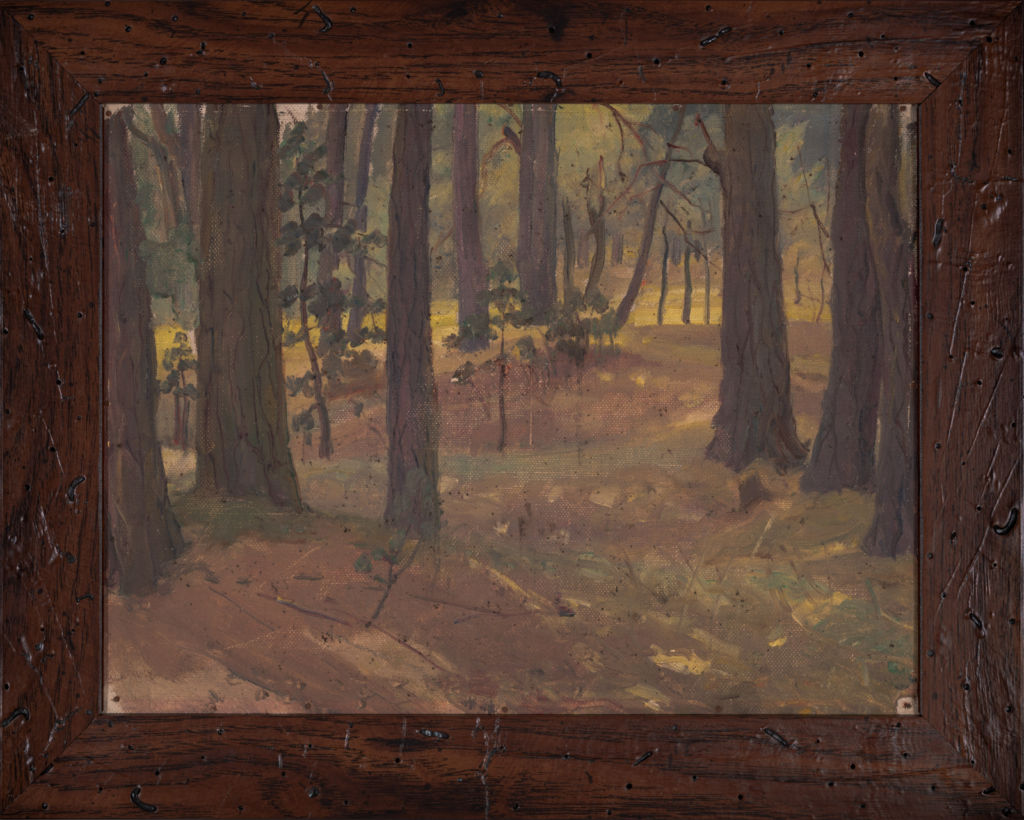
Pine forest on a sunny summer day (No 968). The artwork is owned by the Vilna Gaon Museum of Jewish History
Mojżesz Lejbowski was a painter and well-known portraitist whose works were exhibited in Vilnius, Białystok, Minsk and Grodno. Aside from portraits, he also created paintings of city views, as well as depictions of alleys and courtyards inhabited by poor city dwellers.
He was born on 17 March 1876 in Navahrudak (Novogrudok), Belarus. He studied painting in Vilnius where he was taught by Ivan Trutnev, a Russian painter and the founder of the Vilnius School of Drawing. He went on to study painting in Paris where he lived in 1899-1900 and later in 1904. In the interwar period, he lived in Vilnius, working as a drawing teacher. After the establishment of the Vilnius Jewish Society of Fine Artists in 1925, he became the society’s chairman. In this role, he was responsible for e.g. organisation of material aid for artists.
He was a famous portraitist, using not only oil paints, but also pastels, in his works. When he was not busy creating portraits of people, he focused on depicting picturesque city views and scenes from the lives of urban residents. The Jewish poor were one of the most important themes of his art. He was a teacher of Rafael Chwoles, a Jewish painter and graphic artist who was a member of the Vilnius literary and artistic group “Jung Wilne”. Lejbowski’s works were exhibited in such cities as Vilnius, Białystok, Minsk, and Grodno.
In 1940, he lived in Grodno, but in 1941, he was forced to move to the ghetto in Vilnius. Unfortunately, the cause and exact date of his death remain unknown. He is believed to have died in the Vilnius ghetto in 1942 or 1943. No photographs of Lejbowski have survived. The only known portrait of the artist is a caricature made by the painter Leonard Torwirt.

